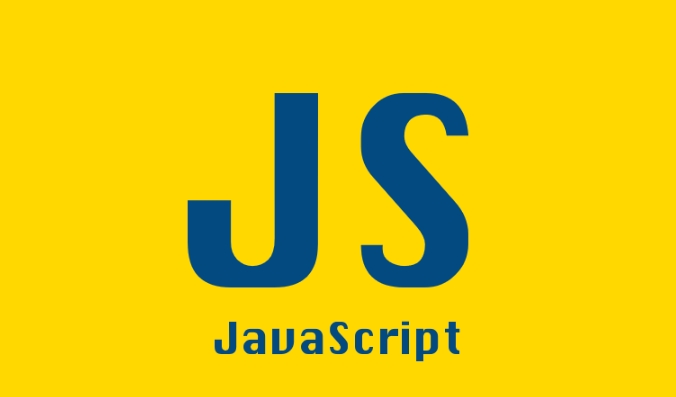How to Change the CSS of an Element Using JavaScript
Jul 11, 2025 am 01:47 AMThere are three main ways to modify element styles with JavaScript: First, directly set the in-line style through the element.style attribute, such as document.getElementById('myDiv').style.backgroundColor = 'red', suitable for simple and temporary modification; second, add, delete or switch class name control styles through classList, such as element.classList.add('highlight'), which is more flexible and convenient to maintain; third, dynamically create style tag insertion pages, such as creating and adding style elements containing styles, which are suitable for a large number of dynamic style controls. Pay attention to the use of camel, priority issues and style conflicts in naming.

It is actually quite simple to directly modify the CSS of an element and use JavaScript. The key is to get that element through JS and then manipulate its style attribute or class name.

Use the style attribute to change the style directly
The most direct way is to use element.style to set the style. For example, if you want to change the background color of a div, you can write it like this:
document.getElementById('myDiv').style.backgroundColor = 'red';
This method is suitable for temporary addition of styles, debugging or making some simple animations. But a few things to note:

- The writing is camel-like, such as
backgroundColorinstead ofbackground-color - Set inline style, with high priority, and it is easy to overwrite the rules in CSS files.
- If there are many styles, the code will be messy and it will be troublesome to maintain.
Therefore, it is generally recommended to use this method only when dynamic calculation is required.
More flexible control of styles through class
A better approach is to control the style by adding, deleting, or switching class names. For example, you first define a highlight class in CSS:

.highlight {
background-color: yellow;
font-weight: bold;
}Then operate the class name in JS:
const element = document.getElementById('myText'); element.classList.add('highlight'); // Add class element.classList.remove('highlight'); // Remove class element.classList.toggle('highlight'); // Switch class
The advantage of this method is to separate styles and logic, CSS tube styles and JS tube behaviors, have clearer structures and easier to reuse.
Pay attention to priority and style conflicts
Sometimes you will find that JS is styled but not effective, which may be a priority issue. For example, if you set the color with style.backgroundColor , but the browser developer tool displays that it is overwritten by other CSS rules, you need to check whether other styles have higher priority.
There are several solutions:
- Use
!important(abuse is not recommended) - Change to modify the class name and let CSS handle the priority
- Check for any spelling errors or missed selectors
For example, if you use .style.display = 'none' , it may be because other CSSs force display to be set, and it will be more reliable to switch to class control.
Dynamically generate style sheets (advanced usage)
If you want to control the styles dynamically in the project, you can also consider creating a <style> tag insert page, or modifying CSS variables. for example:
const style = document.createElement('style');
style.textContent = `
.custom-style {
color: blue;
font-size: 20px;
}
`;
document.head.appendChild(style);Then it can be used like a normal class. This method is suitable for use in plug-ins or component libraries and is not commonly used in daily development.
Basically that's it. Changing the style is not complicated, but it is easy to get stuck in details, especially in terms of priority and naming format. Just pay more attention.
The above is the detailed content of How to Change the CSS of an Element Using JavaScript. For more information, please follow other related articles on the PHP Chinese website!

Hot AI Tools

Undress AI Tool
Undress images for free

Undresser.AI Undress
AI-powered app for creating realistic nude photos

AI Clothes Remover
Online AI tool for removing clothes from photos.

Clothoff.io
AI clothes remover

Video Face Swap
Swap faces in any video effortlessly with our completely free AI face swap tool!

Hot Article

Hot Tools

Notepad++7.3.1
Easy-to-use and free code editor

SublimeText3 Chinese version
Chinese version, very easy to use

Zend Studio 13.0.1
Powerful PHP integrated development environment

Dreamweaver CS6
Visual web development tools

SublimeText3 Mac version
God-level code editing software (SublimeText3)

Hot Topics
 What is 'render-blocking CSS'?
Jun 24, 2025 am 12:42 AM
What is 'render-blocking CSS'?
Jun 24, 2025 am 12:42 AM
CSS blocks page rendering because browsers view inline and external CSS as key resources by default, especially with imported stylesheets, header large amounts of inline CSS, and unoptimized media query styles. 1. Extract critical CSS and embed it into HTML; 2. Delay loading non-critical CSS through JavaScript; 3. Use media attributes to optimize loading such as print styles; 4. Compress and merge CSS to reduce requests. It is recommended to use tools to extract key CSS, combine rel="preload" asynchronous loading, and use media delayed loading reasonably to avoid excessive splitting and complex script control.
 External vs. Internal CSS: What's the Best Approach?
Jun 20, 2025 am 12:45 AM
External vs. Internal CSS: What's the Best Approach?
Jun 20, 2025 am 12:45 AM
ThebestapproachforCSSdependsontheproject'sspecificneeds.Forlargerprojects,externalCSSisbetterduetomaintainabilityandreusability;forsmallerprojectsorsingle-pageapplications,internalCSSmightbemoresuitable.It'scrucialtobalanceprojectsize,performanceneed
 What is Autoprefixer and how does it work?
Jul 02, 2025 am 01:15 AM
What is Autoprefixer and how does it work?
Jul 02, 2025 am 01:15 AM
Autoprefixer is a tool that automatically adds vendor prefixes to CSS attributes based on the target browser scope. 1. It solves the problem of manually maintaining prefixes with errors; 2. Work through the PostCSS plug-in form, parse CSS, analyze attributes that need to be prefixed, and generate code according to configuration; 3. The usage steps include installing plug-ins, setting browserslist, and enabling them in the build process; 4. Notes include not manually adding prefixes, keeping configuration updates, prefixes not all attributes, and it is recommended to use them with the preprocessor.
 What are the key differences between inline, block, inline-block, and flex display values?
Jun 20, 2025 am 01:01 AM
What are the key differences between inline, block, inline-block, and flex display values?
Jun 20, 2025 am 01:01 AM
Choosing the correct display value in CSS is crucial because it controls the behavior of elements in the layout. 1.inline: Make elements flow like text, without occupying a single line, and cannot directly set width and height, suitable for elements in text, such as; 2.block: Make elements exclusively occupy one line and occupy all width, can set width and height and inner and outer margins, suitable for structured elements, such as; 3.inline-block: has both block characteristics and inline layout, can set size but still display in the same line, suitable for horizontal layouts that require consistent spacing; 4.flex: Modern layout mode, suitable for containers, easy to achieve alignment and distribution through justify-content, align-items and other attributes, yes
 How can you animate an SVG with CSS?
Jun 30, 2025 am 02:06 AM
How can you animate an SVG with CSS?
Jun 30, 2025 am 02:06 AM
AnimatingSVGwithCSSispossibleusingkeyframesforbasicanimationsandtransitionsforinteractiveeffects.1.Use@keyframestodefineanimationstagesforpropertieslikescale,opacity,andcolor.2.ApplytheanimationtoSVGelementssuchas,,orviaCSSclasses.3.Forhoverorstate-b
 What is the conic-gradient() function?
Jul 01, 2025 am 01:16 AM
What is the conic-gradient() function?
Jul 01, 2025 am 01:16 AM
Theconic-gradient()functioninCSScreatescirculargradientsthatrotatecolorstopsaroundacentralpoint.1.Itisidealforpiecharts,progressindicators,colorwheels,anddecorativebackgrounds.2.Itworksbydefiningcolorstopsatspecificangles,optionallystartingfromadefin
 What is the scope of a CSS Custom Property?
Jun 25, 2025 am 12:16 AM
What is the scope of a CSS Custom Property?
Jun 25, 2025 am 12:16 AM
The scope of CSS custom properties depends on the context of their declaration, global variables are usually defined in :root, while local variables are defined within a specific selector for componentization and isolation of styles. For example, variables defined in the .card class are only available for elements that match the class and their children. Best practices include: 1. Use: root to define global variables such as topic color; 2. Define local variables inside the component to implement encapsulation; 3. Avoid repeatedly declaring the same variable; 4. Pay attention to the coverage problems that may be caused by selector specificity. Additionally, CSS variables are case sensitive and should be defined before use to avoid errors. If the variable is undefined or the reference fails, the fallback value or default value initial will be used. Debug can be done through the browser developer
 CSS tutorial focusing on mobile-first design
Jul 02, 2025 am 12:52 AM
CSS tutorial focusing on mobile-first design
Jul 02, 2025 am 12:52 AM
Mobile-firstCSSdesignrequiressettingtheviewportmetatag,usingrelativeunits,stylingfromsmallscreensup,optimizingtypographyandtouchtargets.First,addtocontrolscaling.Second,use%,em,orreminsteadofpixelsforflexiblelayouts.Third,writebasestylesformobile,the






